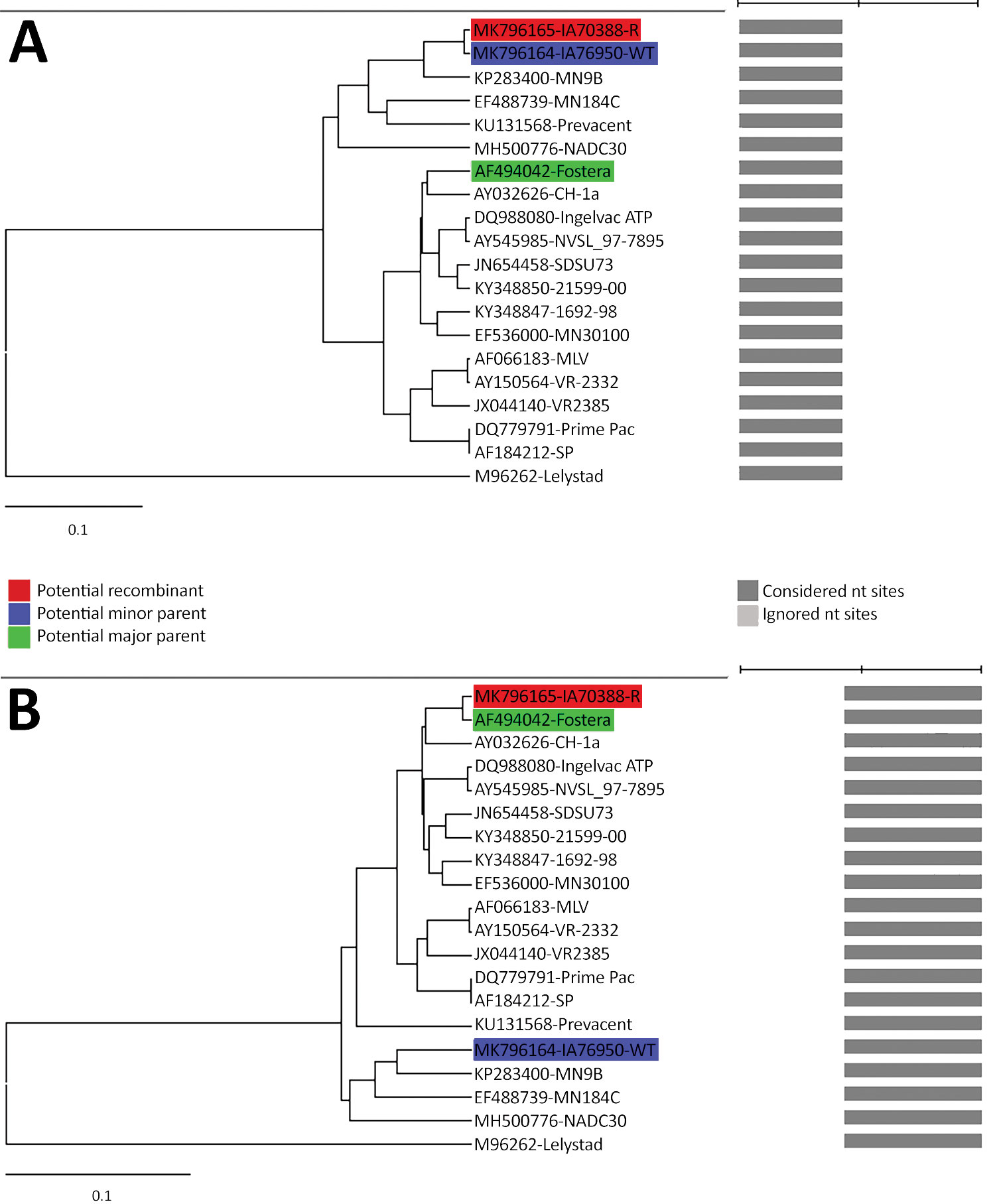Volume 25, Number 12—December 2019
Research Letter
Recombination between Vaccine and Field Strains of Porcine Reproductive and Respiratory Syndrome Virus
Figure

Figure. Genome recombination analysis of the IA70388-R strain of porcine reproductive and respiratory syndrome virus, United States, 2018. A) UPGMA of region derived from major parent (1–6742). B) UPGMA of region derived from major parent (6743–15642 nt). Phylogenies of the parent strains were identified using RDP version 4.24 software (http://web.cbio.uct.ac.za/~darren/rdp.html). Red indicates the recombinant (IA70388-R); green indicates the major parent strain (the Fostera vaccine strain); blue indicates the minor parent strain (IA76950-WT). Scale bars indicate nucleotide substitutions per site.
Page created: November 18, 2019
Page updated: November 18, 2019
Page reviewed: November 18, 2019
The conclusions, findings, and opinions expressed by authors contributing to this journal do not necessarily reflect the official position of the U.S. Department of Health and Human Services, the Public Health Service, the Centers for Disease Control and Prevention, or the authors' affiliated institutions. Use of trade names is for identification only and does not imply endorsement by any of the groups named above.